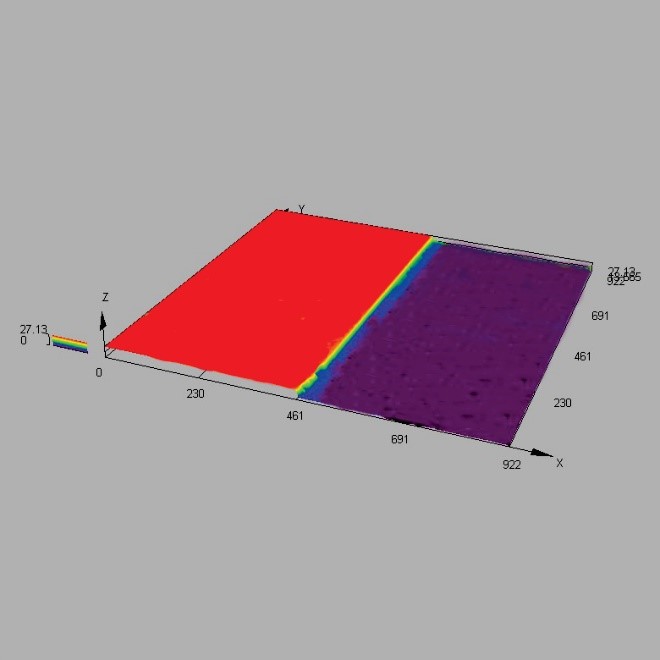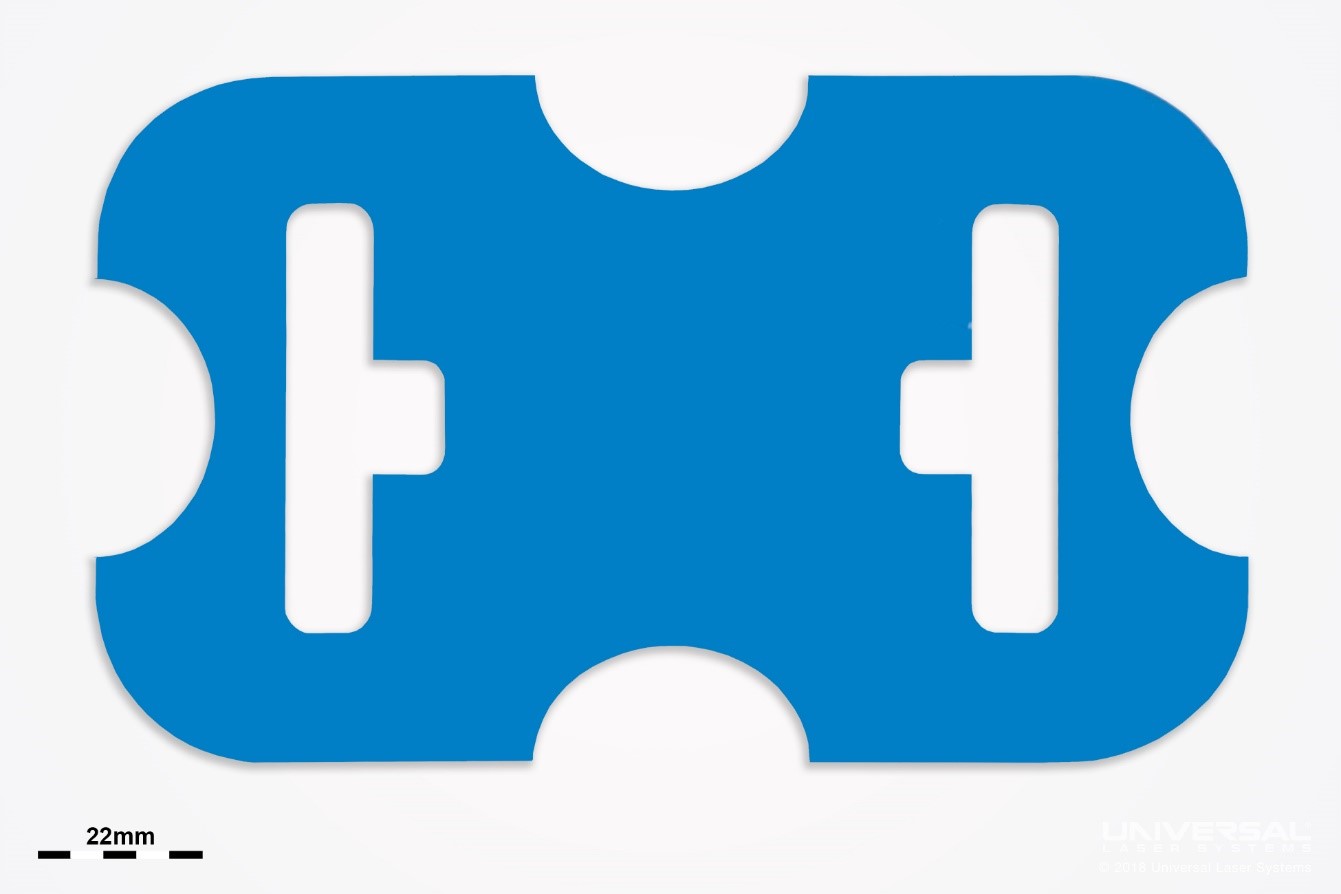Laser Processing of Saint-Gobain CHEMFILM® DF100 Cast PTFE Film
Introduction
Saint-Gobain CHEMFILM® DF100 cast PTFE film is part of a selection of mult-ilayer cast PTFE films produced using a proprietary multilayer process. CHEMFILM DF100 is a thin gauge PTFE film with uniform tensile properties. CHEMFILM DF100 consists of a 25µm thick PTFE film. A diagram depicting CHEMFILM DF100 is shown in Figure 1.CHEMFILM DF100 exhibits uniform tensile properties, excellent chemical resistance, and is suitable for continuous service in a wide temperature range. These properties make this film an excellent dielectric insulator in electronics and fuel cells. The non-contact nature of laser processing allows applications to be processed with small features and fine geometry which might be difficult to achieve with traditional mechanical methods. CHEMFILM DF100 is only suitable for laser cutting, which produces consistent laser processed edges and minimal heat affected zones. Other laser processes are not suggested as they are not conducive to the intended use of this material. Universal Laser Systems makes it simple to consistently and repeatedly process this material to a high degree of dimensional accuracy because the non-contact nature of laser processing eliminates material deformation during processing.
Laser Processing Notes
CHEMFILM DF100 was tested to assess laser processing compatibility and determine the best configuration of peak laser power and wavelength. CHEMFILM DF100 absorbs both the 10.6µm and 9.3µm laser sources with similar efficiency. A microscopy image taken at 300x magnification of CHEMFILM DF100 after laser cutting is shown in Figure 2. The 3D image in Figure 3 depicts how the edge of the film responds to laser cutting with the system configuration of a single 30 watt 9.3µm laser.CHEMFILM DF100 was tested with a 10.6µm laser as well as a 9.3µm laser. The results of these tests were compared by analyzing the heat effects, quality of the processed edge, and post-processing requirements. Both system configurations appear viable for laser cutting with no discernable differences in processing results.
Processing Example
CHEMFILM DF100 applications requiring fine geometry and intricate detail without degrading the physical properties of the material can be accomplished with Universal Laser Systems technology. An example demonstrating the results of laser cutting CHEMFILM DF100 using the recommended system configuration is shown in Figure 4.Conclusion
CHEMFILM DF100 is suitable for laser processing and was extensively tested to determine the optimal processing configuration. Through this testing it was determined that laser cutting is viable with this material and using a 30 watt 9.3µm or 10.6µm CO2 laser source is the recommended system configuration for laser cutting of this material. CHEMFILM DF100 efficiently absorbs the 9.3 or 10.6µm wavelength laser energy to produce a processed edge that has no heat-affected zone or discoloration.
Saint-Gobain CHEMFILM® DF100 cast PTFE film is part of a selection of mult-ilayer cast PTFE films produced using a proprietary multilayer process. CHEMFILM DF100 is a thin gauge PTFE film with uniform tensile properties. CHEMFILM DF100 consists of a 25µm thick PTFE film. A diagram depicting CHEMFILM DF100 is shown in Figure 1.CHEMFILM DF100 exhibits uniform tensile properties, excellent chemical resistance, and is suitable for continuous service in a wide temperature range. These properties make this film an excellent dielectric insulator in electronics and fuel cells. The non-contact nature of laser processing allows applications to be processed with small features and fine geometry which might be difficult to achieve with traditional mechanical methods. CHEMFILM DF100 is only suitable for laser cutting, which produces consistent laser processed edges and minimal heat affected zones. Other laser processes are not suggested as they are not conducive to the intended use of this material. Universal Laser Systems makes it simple to consistently and repeatedly process this material to a high degree of dimensional accuracy because the non-contact nature of laser processing eliminates material deformation during processing.
Laser Processing Notes
CHEMFILM DF100 was tested to assess laser processing compatibility and determine the best configuration of peak laser power and wavelength. CHEMFILM DF100 absorbs both the 10.6µm and 9.3µm laser sources with similar efficiency. A microscopy image taken at 300x magnification of CHEMFILM DF100 after laser cutting is shown in Figure 2. The 3D image in Figure 3 depicts how the edge of the film responds to laser cutting with the system configuration of a single 30 watt 9.3µm laser.
Processing Example
CHEMFILM DF100 applications requiring fine geometry and intricate detail without degrading the physical properties of the material can be accomplished with Universal Laser Systems technology. An example demonstrating the results of laser cutting CHEMFILM DF100 using the recommended system configuration is shown in Figure 4.Conclusion
CHEMFILM DF100 is suitable for laser processing and was extensively tested to determine the optimal processing configuration. Through this testing it was determined that laser cutting is viable with this material and using a 30 watt 9.3µm or 10.6µm CO2 laser source is the recommended system configuration for laser cutting of this material. CHEMFILM DF100 efficiently absorbs the 9.3 or 10.6µm wavelength laser energy to produce a processed edge that has no heat-affected zone or discoloration.




